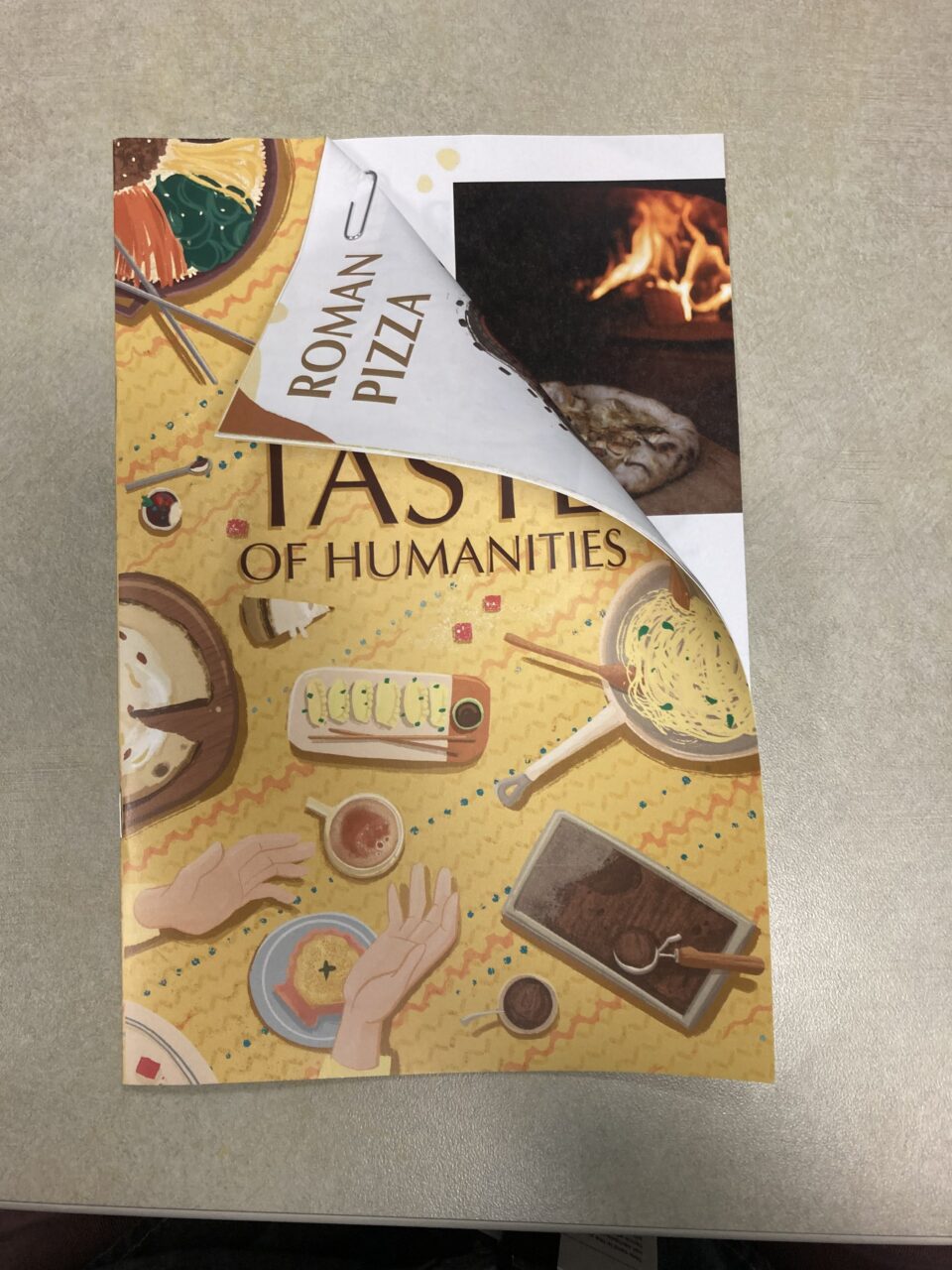
The BYU College of Humanities released a cookbook with the help of professors and faculty, curating recipes that have international flavor and personal significance.
The project, titled “A Taste of Humanities”, was spearheaded by Josh Perkey, who manages digital media and communications for the college. He worked with a handful of students to get the project off the ground, he said, even receiving a grant. It includes 26 different recipes that span both the globe and the college’s departments.
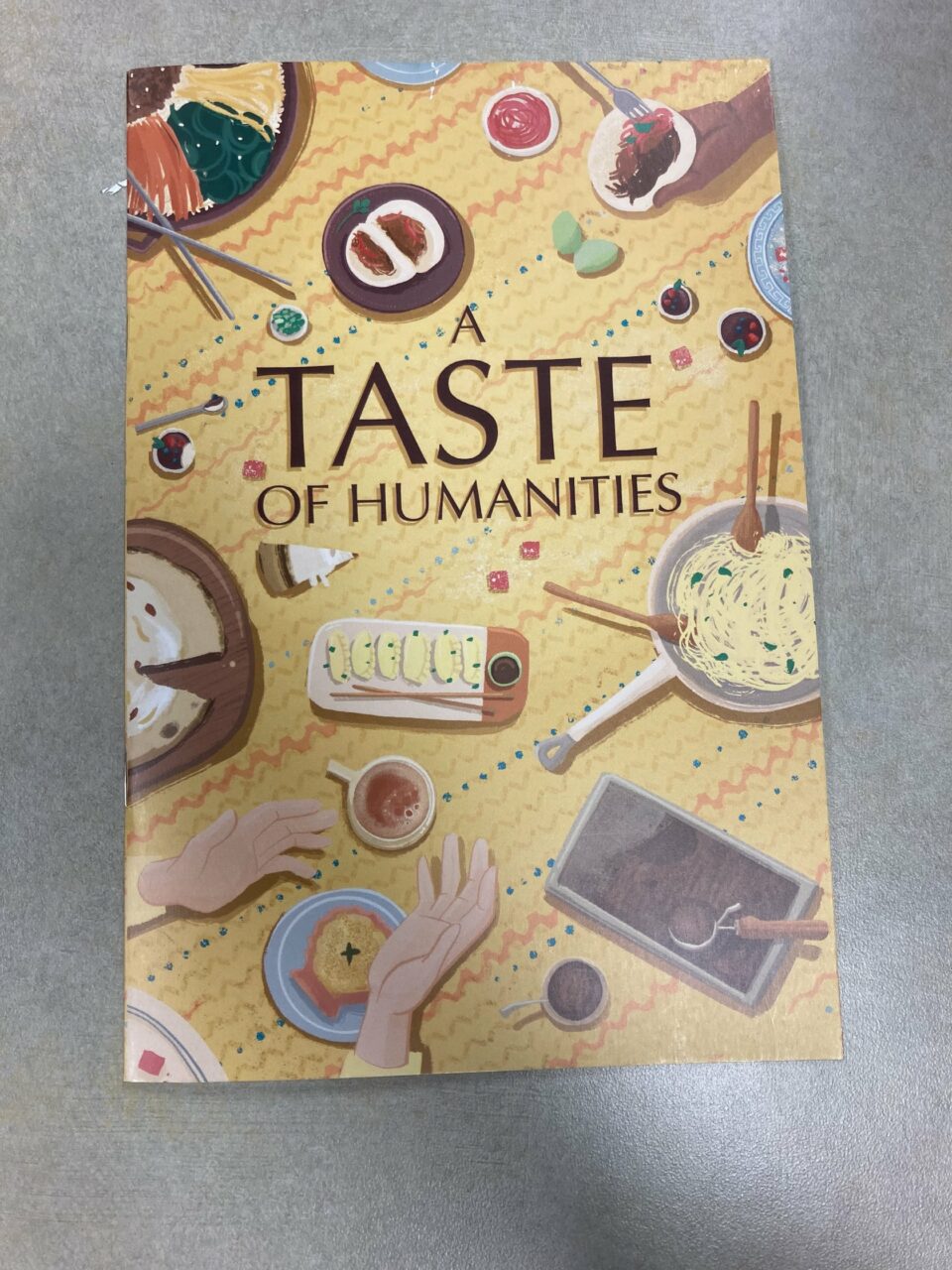
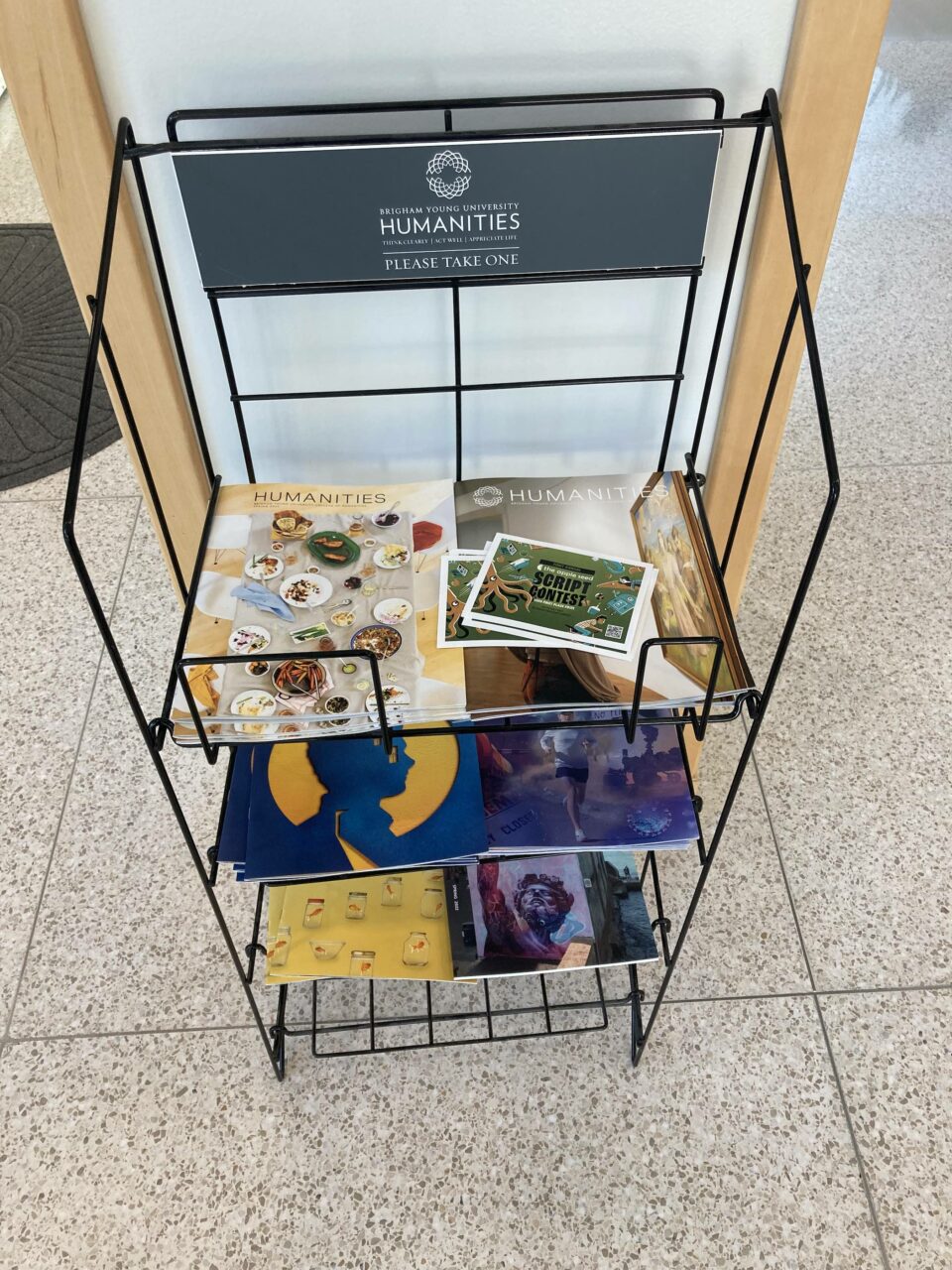
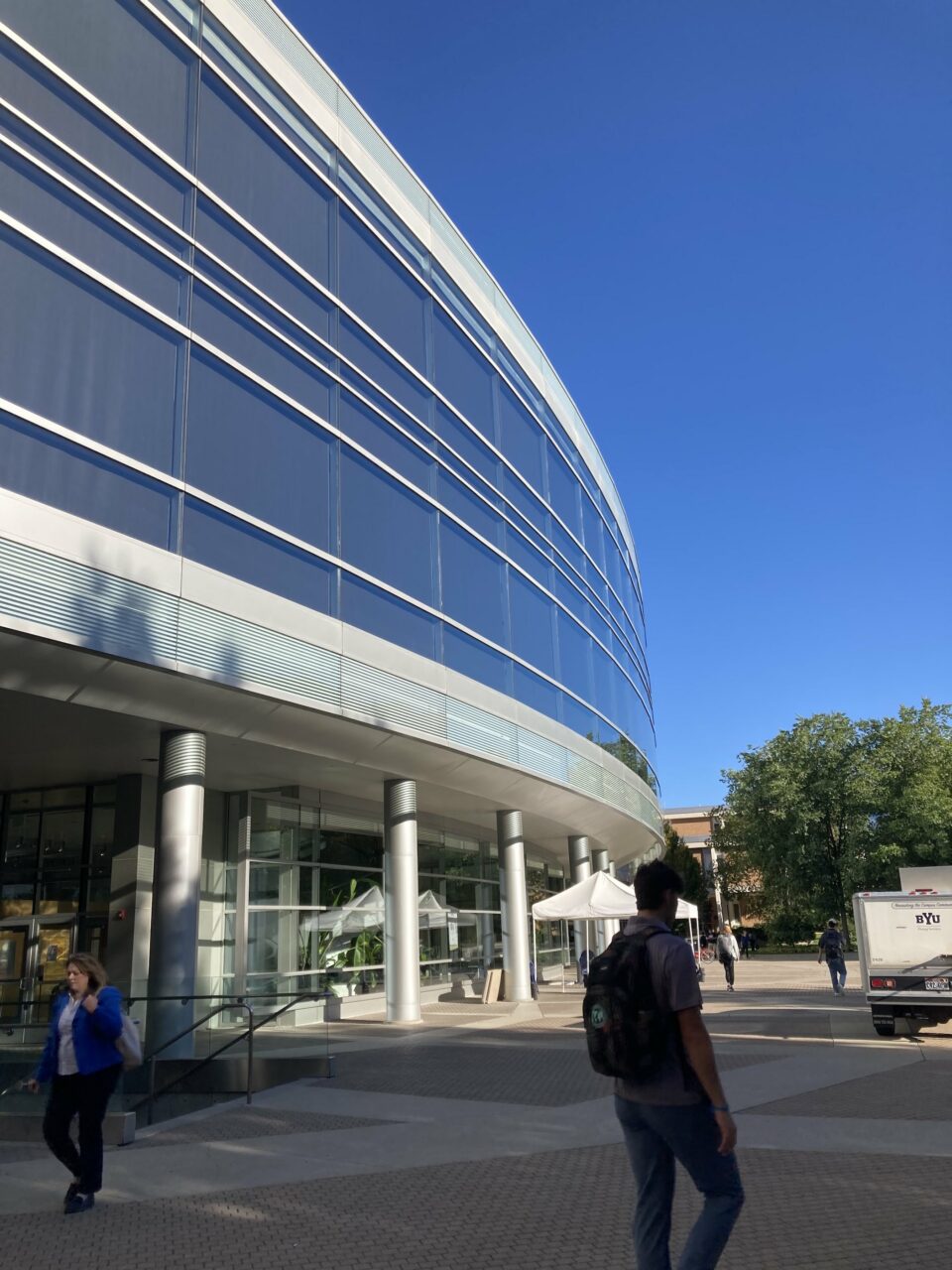
Perkey said the idea was to create something representative of the school’s many departments and to showcase the diversity they offer. “Food is a big part of culture and our college is hugely involved in cultural study, expression and understanding,” he said.
The professors who contributed pulled from their academic discipline, personal experience and love of culinary culture to make the booklet.
Many professors already use their love of food to connect students to their course material. Tony Brown, a professor of Russian studies, said whenever he travels to eastern Europe with students, one of the first things he does is take the group to try kvas, a traditional carbonated drink made with rye or wheat. His contribution to the cookbook is a version of kvas.
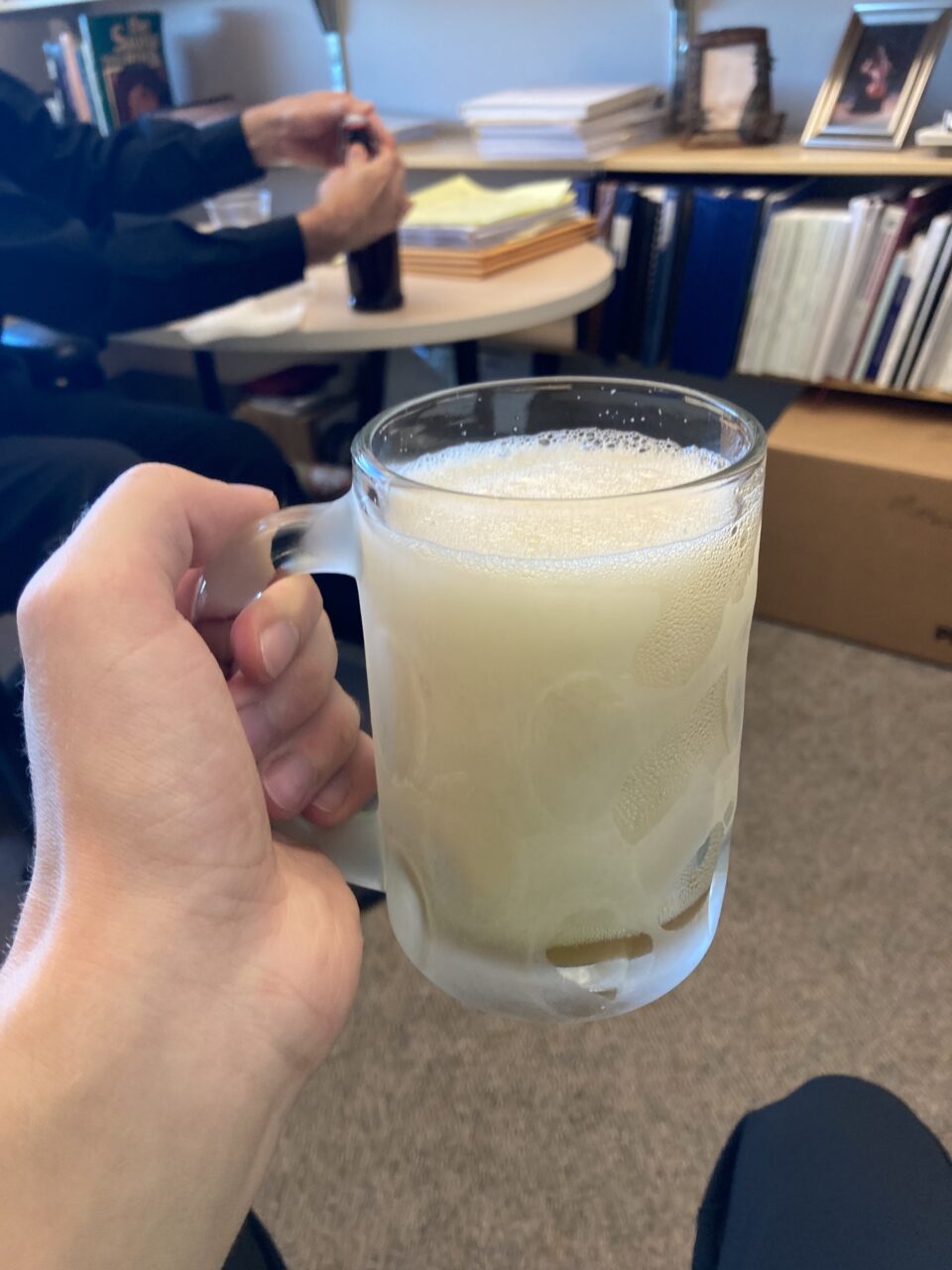
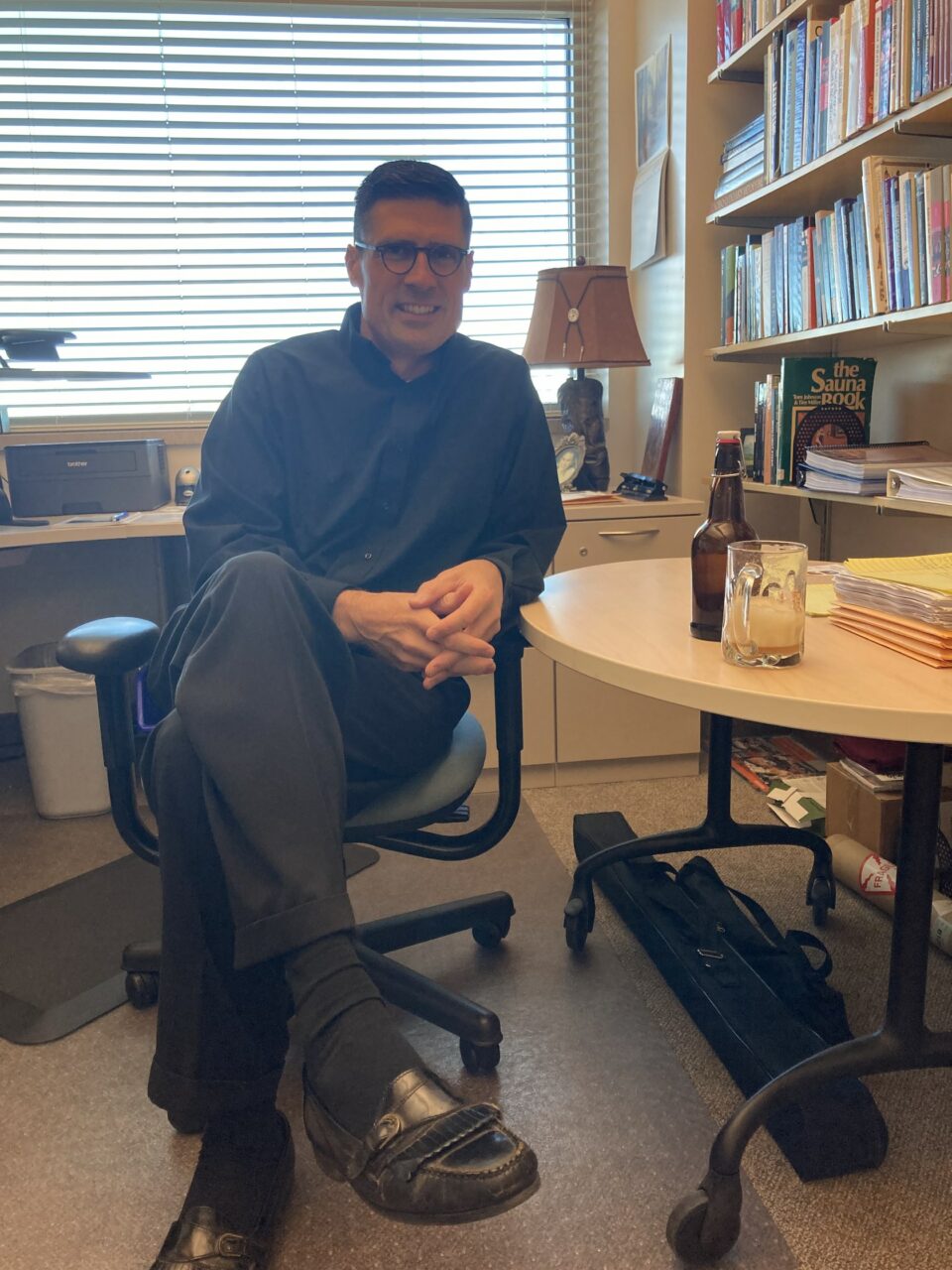
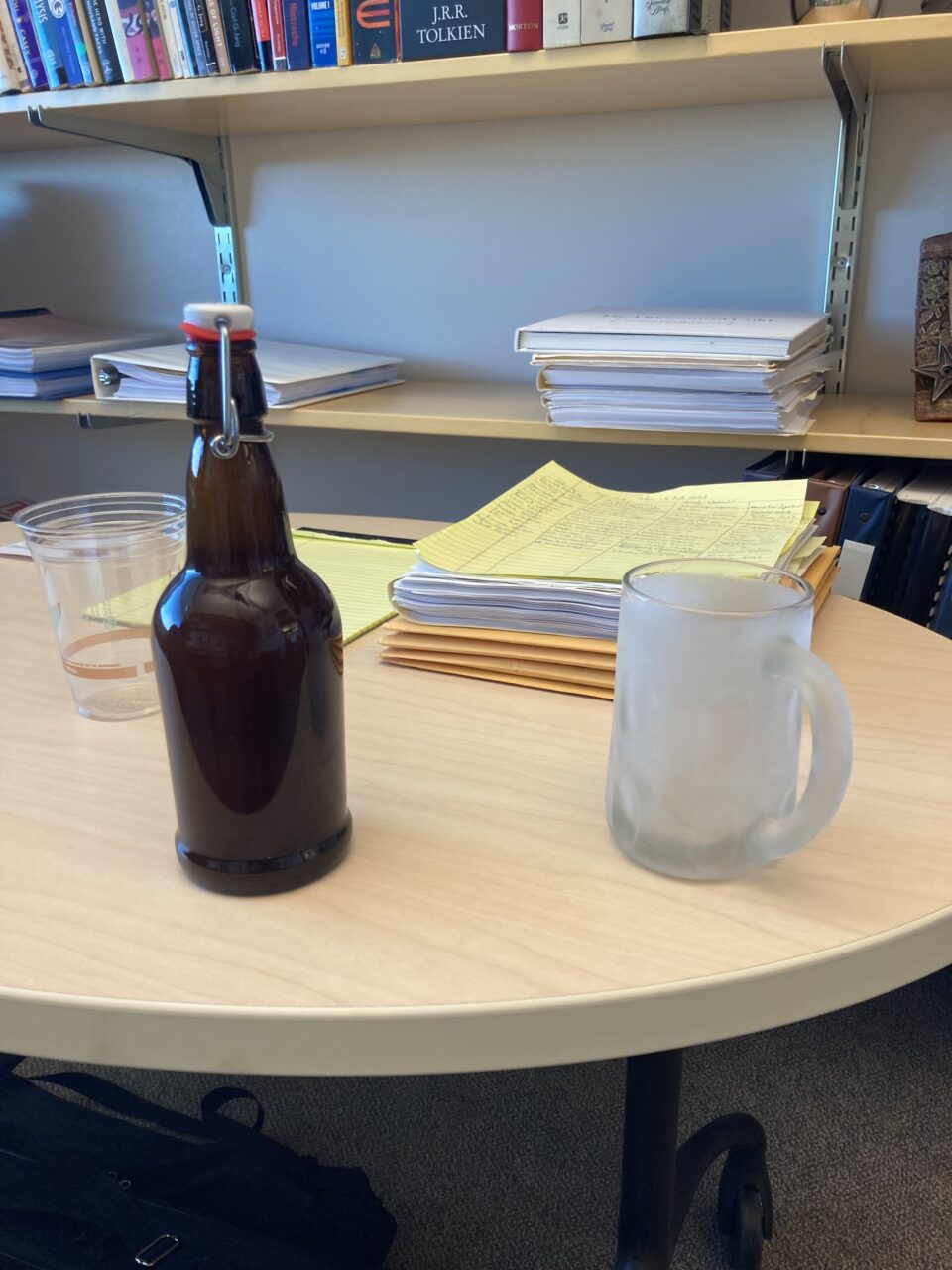
Professor Brown opens a bottle of kvas. The BYU College of Humanities released a cookbook with the help of professors and faculty, curating recipes that have international flavor and personal significance. (James Hoopes)
Brown said he remembers the drink from the time he spent in Kyiv. He said the drink was particularly refreshing in the summer.
“It has this very crisp bite to it that, on a hot day, tastes very refreshing,” Brown said.
People would sell the drink out of big barrels on the streets, he said, and use the same glass mug for each patron, swishing it out with water between customers. “It was very communal because you’re drinking out of the same cup. But I loved that. I loved that it was almost sacramental, in that way,” Brown said.
Steve Riep, professor of Asian & Near Eastern languages, also connects his students to their studies through food. He contributed a recipe for jiaozi, or Chinese dumplings. He occasionally makes jiaozi with his students.
“It’s a way for people to get literal a hands-on experience with Chinese culture,” Riep said. “It’s food that requires you to touch what you’re making.”
Riep said the dish is a celebratory one, most common during New Year’s. He said this is because jiaozi are shaped like gold or silver money pieces, and is thought to bring prosperity. While folding the dumplings can be tricky, Riep recommends making them the traditional way — with a group to socialize while cooking them.
Dr. Jamie Horrocks also recognizes food as an important tool for connection. She says her recipe for Turkish delight reminds her of her time in London. Horrocks said the dish was inspired by Edmund from “The Chronicles of Narnia”, who turns his family into the evil White Witch in exchange for the sweet treat.
The first time Horrocks tried rose-flavored Turkish delight was while she was studying abroad. Recalling that first bite, she said, “All I could think of was all of the times as a kid I would use a bad word, and my parents put soap in my mouth.”
But London, she said, exposed her to food from diverse cultures for the first time. Her palette expanded and she grew to like the floral taste of Turkish delight. She said the treat has the power to take her back to that time in London.
“There’s something about the physical memories that are stored in our bodies that I think have the power to last longer than just reading something or just talking to someone without that affective connection,” said Horrocks.
Other professors enjoy the simple pleasure of gathering guests around a table for a meal. Dr. Thomas Wayment, a professor of comparative arts and letters, said he and his wife have been known to host backyard parties, complete with pizzas baked in their stone oven. The oven, he said, is designed after the ones unearthed in Pompeii.
Wayment said his pizza, detailed in the cookbook, was inspired by Roman tradition. He said he included traditional ingredients like toasted nuts and olive oil which nod to Roman culture, without necessarily recreating any particular ancient dish.
He described the dish in detail: “the buttery-ness of the brie, the carmelized onions have a kind of sweetness, and then the almonds give it a roasted flavor — it’s a pretty cool pizza.” Wayment said guests often rank this pizza in the top three — that is, if it is not their very favorite, he said.
Dr. Richard McBride, chair of the Asian and Near East languages department, uses food to gather people too, particularly his family. His recipe for Korean bibimbap comes from his late wife, who passed away in 2018 from pancreatic cancer. He said they would often make the dish for dinner guests.
He said he and his sons will go out to eat on special occasions, like his wife’s birthday. “When my boys want to remember their mom, it’s comfort food. It tastes like home,” McBride said.
Perkey, the leader of the project, said “What food does is it draws people together. It creates a sense of community just by the fact that you’re there bonding over food.”
The online recipe book has a submission post at the end. Perkey said he hopes to add the stories and recipes of BYU Humanities alumni to the cookbook as they are submitted. The cookbook can be found in the Joseph Fielding Smith Building on campus, attached to this semester’s Humanities magazine issue. It is also available for free on the Humanities website.




